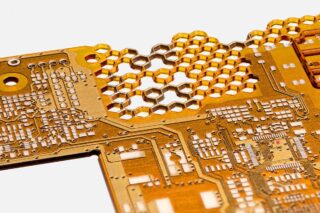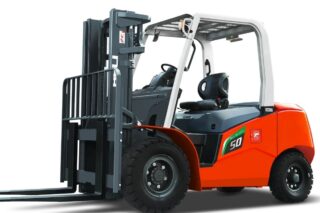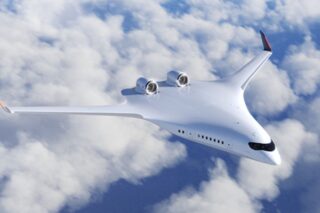The aftershocks of the pandemic and ongoing global skills shortage will continue to drive industrial automation investment in 2023, not only to supplement existing workers but also to unlock new business capabilities and insights.
Automation has been a driver of progress since the first industrial revolution, but the rise of robotics and artificial intelligence has amplified its impact. The global industrial automation market size was estimated at USD $196.6 billion in 2021 and is set to surpass USD $412.8 billion by 2030, according to Precedence Research.
This boom in automation adoption will come in part as organizations in all sectors hedge against future events which could once again impact the availability of their workforce, says Forrester analyst Leslie Joseph.
“Automation has been a major force reshaping work since long before the pandemic; now, it’s taking on a new urgency in the context of business risk and resiliency. As we emerge from the crisis, firms will look to automation as a way to mitigate the risks that future crises pose to the supply and productivity of human workers. They will invest more in cognitive capabilities and applied AI, industrial robotics, service robots, and robotic process automation.”
Automation initially focused on increasing output while reducing labor costs, but the top 5 automation trends for 2023 point towards an increasing focus on intelligent automation, which unlocks a broader range of business benefits.
01/ Artificial Intelligence
More than half of Europe’s top manufacturers are already implementing at least one AI use case in manufacturing operations, according to 2019 research from the Capgemini Research Institute. The artificial intelligence manufacturing market size was USD $2,963 million in 2021 and is estimated to leap to USD $78,744 million by 2030.
Opportunities abound for AI in manufacturing, from intelligent production automation to warehousing and distribution. The three use cases which stand out in terms of their suitability for kickstarting a manufacturer’s AI journey are intelligent maintenance, product quality control, and demand planning.
In the context of manufacturing operations, Capgemini found most AI use cases centered around machine learning, deep learning, and “autonomous objects” – such as collaborative robots and autonomous mobile robots – which can handle tasks on their own.
02/ Collaborative robots
Designed to safely work side-by-side with humans, and quickly adapt to new tasks, cobots highlight the potential of automation to assist workers rather than replace them. Advances in artificial intelligence and situational awareness are unlocking new capabilities.
RELATED ARTICLE
According to Rian Whitton, Principal Analyst at ABI Research,
“The most direct benefit of cobots is not in their ability to collaborate with humans. Rather, it is in their relative ease of use, improved interface, and the ability of end-users to redeploy them for different tasks.”
03/ Robotic Process Automation
Beyond the factory floor, robotics and automation are set to have just as significant an impact in the back office.
Robotic Process Automation lets businesses automate manual, repetitive processes and tasks – such as entering data and processing forms – which are traditionally undertaken by people but can be handled by codified rules.
As with mechanical robots, RPA is designed to do basic heavy lifting. Just as industrial robotic arms progressed from welding cars to handling more intricate tasks, improvements in RPA are seeing it take on processes that require a greater level of dexterity.
The global RPA software and services market will be worth USD $20.1 billion in 2030, up from USD $4.8 billion in 2021, according to GlobalData. For Nicklas Nilsson, Consultant for Thematic Research at GlobalData,
“COVID-19 highlighted the necessity of coordinating automation across a business. This has accelerated the development of RPA as companies move away from stand-alone automation capabilities and instead offer RPA as part of a broader toolkit of automation and artificial intelligence technologies, allowing for end-to-end automation of more complex business processes.”
04/ Autonomous Mobile Robots
Just as robots are enhancing automation on the production line, autonomous mobile robots are improving automation within logistics. The global autonomous mobile robot market was valued at USD $2.7 billion in 2020 and is projected to reach $12.4 billion by 2030 according to research firm Allied Market Research.
RELATED ARTICLE
Beginning as autonomous guided vehicles, with limited functionality and flexibility, autonomous mobile robots now take advantage of artificial intelligence and enhanced sensors, says Dwight Klappich, VP Analyst, Supply Chain Technology, Gartner:
“AMRs add intelligence, guidance and sensory awareness to historically “dumb” automated guided vehicles (AGVs), allowing them to operate independently and around humans. AMRs address the historic limitations of traditional AGVs, making them better suited to, and more cost-effective for, complex warehouses.”
05/ Predictive Maintenance
Rather than simply automate existing maintenance tasks, artificial intelligence is taking predictive maintenance to the next level – allowing it to pick up on subtle clues to optimize maintenance schedules, identify faults and predict breakdowns before they cause costly downtime or damage.
Predictive maintenance is a practical application of the Industrial Internet of Things. By 2026, 60 percent of IoT-enabled predictive maintenance solutions will be delivered as part of enterprise asset management products, up from 15 percent in 2021, according to Gartner.











